|
Since the discovery of pulsars in 1967 and the discovery of the first
millisecond pulsar (a pulsar that rotates hundredths of times in a second)
in 1982, pulsars have been used to study a wide variety of physical and
astrophysical problems. The applications range from gravitational physics
and cosmology to neutron star seismology. In many areas, pulsars provide
the only tool accessible to us to study physical environments under extreme
conditions.
Pulsars can be used not only to study neutron stars properties but also
as tools for many physical and astrophysical studies.
- Probing the interstellar medium: it is well
known that, because of the presence in the interstellar medium of
free-electrons, a wide band radio signal is dispersed: low frequencies
will arrive at the observer after higer ones.
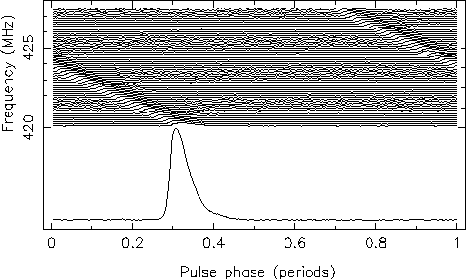
The time delay depends on the electronic column density between
the radio source and the observer. For a pulsed signal such delay is
measurable and gives estimates on the free electronic density for
those pulsars wich have indipendently determined distances.
Searching for extrasolar
planets: if a pulsar is in orbit with another body the distance
between the radio source and the Earth changes along the
orbit. Diffrent pulses hence cover diffrent distances and arrive at
the observer at different times. In particular an observer measures a
sinusiodal variation in the times of arrival (TOA) of the pulses of a
pulsar belonging to a binary sistem. Given the high stability of the
pulsar signals (in particular of millisecond pulsars) and the accuracy
of the TOAs measurements, even the presence of a planetary sized
objects orbiting a radio pulsar is detectable.
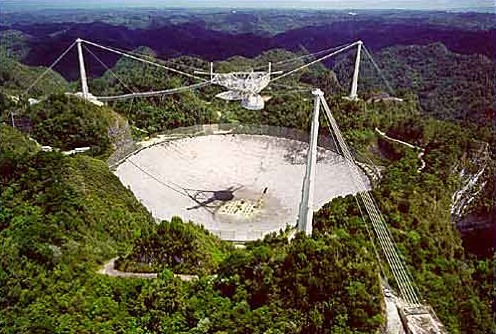
In 1992 Professor Alex Wolszczan discovered the first
extrasolar planet during a pulsar search with the Arecibo
radiotelescope. For this discovery professor Wolszczan has also been
honored by the country of Poland in having his likeness featured on a
stamp celebrating the past
millennium!
Detecting gravitational
waves: the aforementioned stability of millisecond pulsars
enable us in principle to detect any kind of distortion introduced in
the highly predictable times of arrival of these objects. The passage
of a gravitational wave (produced e.g. by the coalescence of two
neutron stars or two black holes) would distort the space-time and
produce a change in the path followed by the radio waves from a pulsar
and hence a change in its TOAs.
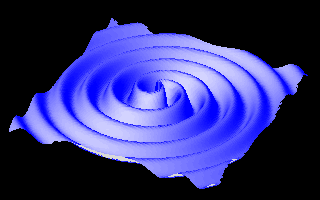
To catch such a large scale signal (and to distinguish it's signature
from timing noise or other sources of uncertainties) it is necessary
to monitor the TOAs of many millisecond pulsars in different points of
the sky, creating a sort of timing array.
Testing general
relativity: a pulsar included in a binary system containing two
compact bodies (e.g. two neutron stars) is a perfect laboratory to
test the predictions of Einstein's general relativity. The presence
of a strong gravitational field, indeed, affects the shape of the
space-time near the binary system and hence, as mentioned before, the
lengh of the path followed by the radio waves and by consequence the
times of arrival of the pulses. From the analysis of the TOAs is
possible to measure not just the spin (period and period derivative)
and keplerian orbital parameters (binary period, projected semimajor
axis, eccentricity, time of passage at the periastron and longitude of
periastron) but also up to 5 post-keplerian parameters connected with
relativistic effects: the periastron advance, the orbital decay due to
loss of energy in the form of gravitational waves, the parameter
gamma, that measures the gravitational redshift and the time
dilatation and the range and shape of the Shapiro delay produced by
the deformations of the space-time in the pulsar's surroundings. These
parameters are connected with the orbital parameters of the binary
system and with the masses of the two stars. Measuring two
post-keplerian (pk) parameters hence allows to determine univoquely
and separately the masses of the two compact objects. Measuring
others pk parameters opens the possibility of testing the prediction
of general relativity. 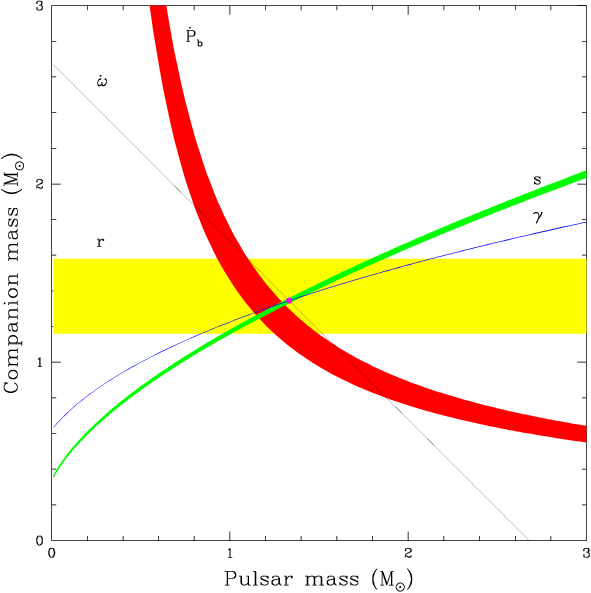 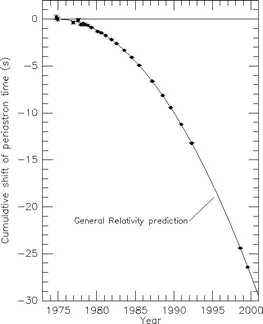
Such a test has been made for the first time by professor Russel Hulse
and professor Joseph Taylor of the Princeton University (awarded with
the Nobel prize
for Physics in 1993) by measuring the periastron advance of the
double neutron star system (DNS) containing the pulsar PSR
B1913+16.
The discovery of radio pulsars in DNSs has allowed to give an estimate
of the coalescence rate of such systems and hence of the possibility
for gravitational wave detectors, as the italo-french VIRGO, to detect gravity wave
bursts produced in this kind of event.
Probing the gas and
potential well of globular clusters: a Globular Cluster (GC)
is a great ball of stars, densely packed, which contains hundred of
thousands of individual stars. In a GC nucleus the stars are so close
that in a cubic parsec can be more than 1000 stars (for comparison, in
Sun's vicinity there is no stars in a cubic parsec). Because of the
high density, close encounters between stars aren't rare and lead to
the formation of binary system, where millisecond (or 'recycled')
pulsars are believed to form. Indeed roughly 40% of recycled pulsars
are found in GCs. Because of the highly stable temporal behaviour of
these objects, the acceleration along the line of sight produced by
the gravitational potential well of Globular Clusters on these objects
can be measured.

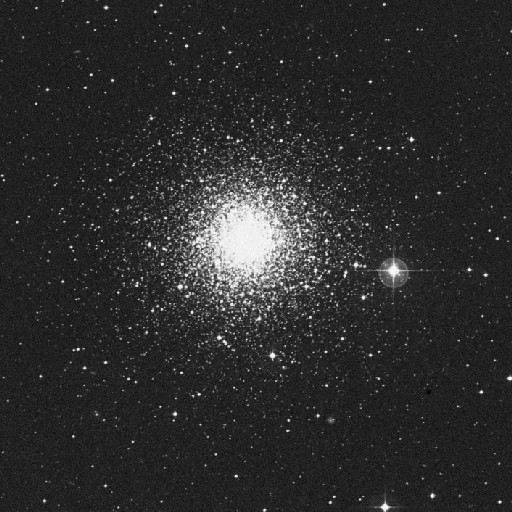
It is then possible to dynamically infer the ratio between the light
emitted by globular cluster's stars and the GC's total mass (given by
visible stars and non luminous matter - central black holes, for
instance) that causes the pulsar's motion thowards the center of the
Cluster. The study of the more than 20 millisecond pulsars found in
the Globular Cluster 47 Tucanae have
also allowed the first detection of gas in a GC.
Last update: 13-Jan-2006
|






